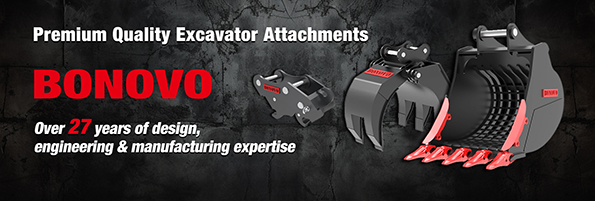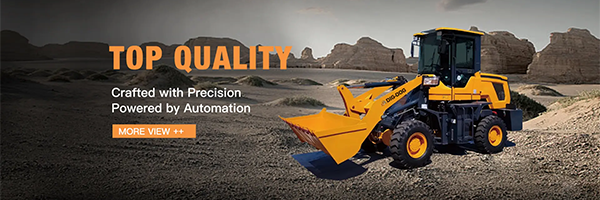In the field of engineering construction, wheeled excavators have become important mechanical equipment in various engineering projects with their flexible mobility and strong operating capabilities. However, not all wheeled excavators can operate efficiently under complex working conditions. Their performance must meet a series of strict requirements. These requirements are like performance "red lines". Only by meeting the standards can the equipment be qualified and competent for various difficult tasks.
Power performance: continuous and stable output is the key
The power system is the "heart" of the wheeled excavator, providing a steady stream of energy for the operation of the whole machine. Its power performance directly affects the excavation efficiency and the adaptability of the equipment under different working conditions. Wheeled excavators mostly use diesel engines as power sources, and the engine power must be accurately matched with the weight of the whole machine and the intensity of operation. For example, a common 15-ton wheeled excavator is usually equipped with an engine with a power of about 80-100 kilowatts. This power level can ensure that the engine runs stably and outputs strong torque when the excavator is digging hard soil, crushing rocks and other heavy-duty operations, avoiding slow or even stagnant excavation due to insufficient power. At the same time, the fuel economy of the engine is also a key consideration. Engines with efficient combustion technology can reduce fuel consumption while ensuring power output, saving operating costs for users. In actual operations, continuous and stable power output allows wheeled excavators to operate continuously, reducing operation interruptions caused by power fluctuations, and greatly improving work efficiency. For example, in urban infrastructure construction projects, it is necessary to frequently dig trenches and transport materials. Stable power performance ensures that the excavator can complete tasks quickly and shorten the construction period.
Digging performance: depth, strength and accuracy are equally important
Digging performance is the core capability of wheeled excavators, which is mainly reflected in three aspects: digging depth, digging strength and digging accuracy. The digging depth determines the range of the excavator's operation. The digging depth of different types of wheeled excavators varies. Generally, the digging depth of small wheeled excavators is 3-5 meters, the medium-sized can reach 6-8 meters, and the large can exceed 10 meters. For example, in mining projects, it is necessary to dig deeper pits. Large wheeled excavators can dig ore deep underground with the advantage of large digging depth to meet mining needs. Digging force is related to the excavator's ability to crush and dig materials of different hardness. The design of the dipper arm and bucket and the pressure output of the hydraulic system jointly determine the digging force. Strong digging force can easily cope with hard rocks, frozen soil and other materials. For example, wheeled excavators equipped with large torque dipper arms and high-pressure hydraulic systems can effectively crush and dig hard rocks to improve mining efficiency. Digging accuracy is particularly important in some scenarios that require high operating accuracy, such as urban pipeline laying and garden landscape construction. Advanced wheeled excavators are equipped with electronic control systems, which monitor the bucket position in real time through sensors, accurately control the digging action, ensure that the digging depth and width meet the design requirements, and avoid damage to surrounding facilities.
Mobility: Flexible shuttle in complex sites
Compared with crawler excavators, the biggest advantage of wheeled excavators is their excellent mobility, which enables them to quickly transfer between different sites and flexibly shuttle in narrow spaces. The walking speed of wheeled excavators is an important indicator of mobility. Generally, their walking speed is 20-40 kilometers per hour, and some high-speed models can reach more than 50 kilometers per hour. Such speed allows wheeled excavators to be transferred from one construction site to another in a short time, reducing transportation time and cost. In urban road construction, wheeled excavators can quickly reach different construction sections with a faster walking speed and carry out excavation and cleaning operations in a timely manner. In addition, wheeled excavators have a small turning radius and flexible steering. They can turn freely and turn around in narrow streets, construction sites and other limited space areas to adapt to complex working environments. For example, in the renovation project of old residential areas, narrow passages and crowded spaces bring many inconveniences to construction, while wheeled excavators can easily move between buildings with flexible maneuverability to complete excavation, demolition and other tasks.
Stable performance: the cornerstone of safe and efficient operation
Stable performance is the basic guarantee for safe and efficient operation of wheeled excavators. During excavation operations, the stability of the fuselage directly affects the smoothness and accuracy of the excavation action, and is also related to the personal safety of the operator. The stability of wheeled excavators mainly depends on the chassis design, counterweight and outrigger system. The sturdy chassis structure can evenly distribute the weight of the whole machine and improve the stability of the equipment on uneven ground. Reasonable counterweight configuration can balance the forward tilting moment generated during excavation operations and prevent the fuselage from tipping over due to uneven force. For example, when excavating deep foundation pits, the larger excavation force will cause the fuselage to tilt forward. At this time, the counterweight plays a key role to ensure that the excavator remains stable. The outrigger system is an important device to further enhance stability during operation. The hydraulic outrigger can automatically adjust the support height according to the conditions of the work site, expand the support area, and enable the excavator to operate stably under complex working conditions such as soft and inclined ground. In mountain road construction, the ground is undulating. Through outrigger adjustment, the wheeled excavator can remain stable on complex terrain such as slopes, and carry out excavation operations safely and efficiently.
Operational performance: convenient and comfortable to improve work efficiency
Operational performance is related to the operator's work experience and work efficiency. Modern wheeled excavators pursue convenience and comfort in operation design. The operating handle is designed in accordance with ergonomic principles, with moderate operating force and reasonable travel, which reduces the fatigue of operators working for a long time. For example, the operating handles of some high-end wheeled excavators adopt a lightweight design and are equipped with a sensitive hydraulic pilot control system. The operator can accurately control the various movements of the excavator and achieve fine operation by simply turning the operating handle. In addition, the human-machine interaction interface in the cab is constantly optimized, and the instrument panel clearly displays the equipment operating parameters, such as engine speed, oil temperature, oil pressure, etc., which is convenient for operators to grasp the equipment status in real time. Some advanced models are also equipped with intelligent display screens, which integrate GPS positioning, operation records, fault diagnosis and other functions. Operators can intuitively understand equipment information through the display screen and make operation settings, greatly improving the efficiency of operation management. In long-term high-intensity operations, a comfortable operating environment and convenient operating performance can keep operators in a good working state and improve the overall operating efficiency of wheeled excavators.
Durability: Coping with the test of harsh working conditions
The working environment of engineering construction is complex and diverse. Wheeled excavators often face harsh working conditions such as high temperature, severe cold, dust, and humidity, which places extremely high demands on their durability. Key components of excavators, such as engines, hydraulic systems, chassis, etc., need to have good wear resistance, corrosion resistance and high temperature resistance. The engine is made of high-strength materials, and the key internal parts are specially treated to adapt to high-temperature and high-load working environments and extend the service life. The oil pipes, joints and other components of the hydraulic system are made of high-quality materials, with good sealing performance and corrosion resistance, to prevent hydraulic oil leakage and ensure stable operation of the system. The crawler tracks, supporting wheels and other components of the chassis are specially heat-treated to improve hardness and wear resistance. When driving on rugged and rocky roads, they can effectively resist wear and reduce the frequency of failures. For example, in engineering projects in desert areas, there is a lot of dust and high temperatures. Wheeled excavators with good durability can continue to operate in such harsh environments, reduce equipment maintenance costs, and ensure the smooth progress of the project.
Wheeled excavators can only operate efficiently, safely and stably in various complex engineering construction projects and create greater value for users if they meet strict requirements in terms of power performance, excavation performance, maneuverability, stability, operation performance and durability, and cross the performance "red line". When purchasing and using wheeled excavators, fully understanding and paying attention to these performance requirements will help to select suitable equipment and maximize the efficiency of the equipment through correct operation and maintenance.
Wheeled excavator performance "red line": only meet these use requirements to be qualified
- DIG-DOG
- Counselor
- Posts: 645
- Joined: Oct 20th, '24, 22:38
- Location: China
Wheeled excavator performance "red line": only meet these use requirements to be qualified
Choose DIG-DOG for high-quality, customizable brush cutters for skid steers with fast delivery. Contact us today to discover how our superior products can enhance your land management tasks!
for more info just visit our website at WWW.DIG-DOG.COM
contact # : +86 158 6218 2088
email : sales@bonovogroup.com
for more info just visit our website at WWW.DIG-DOG.COM
contact # : +86 158 6218 2088
email : sales@bonovogroup.com

